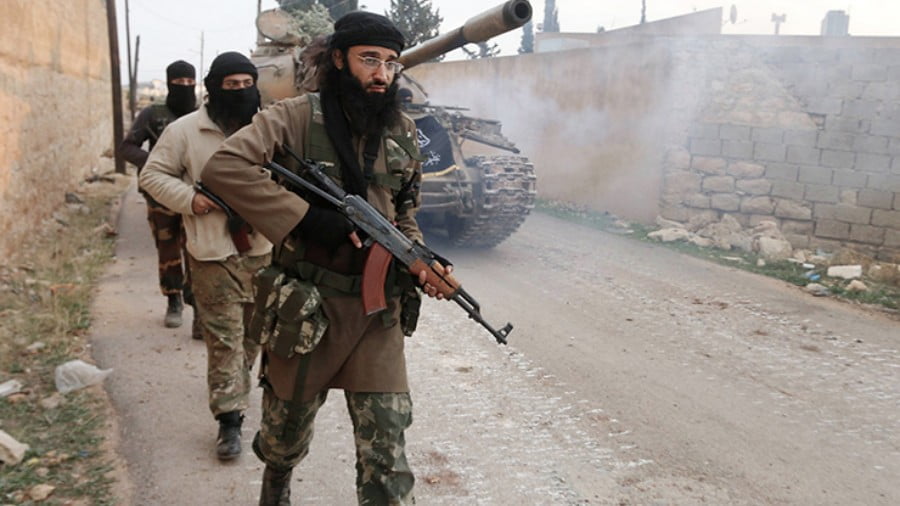Daesh Appears Again
On July 24 in the south of Syria, terrorist group forbidden in Russia Daesh very loudly reminded the world of itself. In As-Suwayda and the south west of Deraa, two massive suicide bombings occurred, resulting in more than 220 people killed and close to 200 wounded in As-Suwayda, while the suicide bomber in Deraa blew himself in the middle of Syrian military concentrations, destroying two tanks and killing dozens of soldiers. This was followed by an attack by Daesh militants during which the Syrian military lost several dozen more as dead and prisoners. The latter were immediately publically executed on the spot.
The problem with fighting against Daesh is that the terrorists are willing to go to their deaths, unlike those fighting against them. And so far no one has found an effective way to combat such enemies, defeating them only through a huge advantage in manpower, weapons, and military equipment. For this reason, the ratio of losses is always heavily in Daesh’s favor. It can also be noted that in the area near the cities of As-Suwayda and Deraa, there are Daesh militants who were transferred from Yarmouk as a result of an agreement surrendering the camp to control of Pro-Iranian Shiite mercenaries. Naturally, the displaced militants did not lay down their weapons but continued their war. In roughly the same way a unit of militants displaced from Yarmouk to the desert region literally immediately reinforced the units of their colleagues and took part in the assaults and attacks on a broad front in eastern Syria.
The military operation by government forces in Deraa naturally got stuck in Daesh-controlled territory after the defeat of units of the opposition and local militia. Because this group is unlike others in that it is impossible to come to agreements with them: they can only be crushed numerically, and that is precisely what is happening now.
In front of Daesh’ enclave, near the Israeli and Jordanian border in the south, up to 25,000 Syrian army soldiers are concentrated, while Daesh militants there number no more than 1,500. According to all previous experience of military operations against the group, it is nearly impossible to destroy its fighters, even when they are surrounded, because they manage to escape from the territory while maintaining their potential. Daesh terrorists simply flow to a new area and start a new war there. As they are fighting for the idea of establishing a caliphate rather than for any specific territory, it doesn’t matter where they fight. Such an ideology can only be successfully fought with another ideology, but all opponents of Daesh are rather ill equipped in that matter.
The practice of removing militants from territory which, in accordance with an agreement reached in Astana between Turkey, Russia, and Iran, is divided amongst the three countries into de-escalation zones, appears rather ambivalent. On the one hand, B. Assad’s government gets rid of the need to storm militant-occupied cities, which is a positive development for the Syrian President in the situation of an acute shortage of manpower and a lack of resources. On the other hand, militants expelled to other territories continue their wars or prepare for new battles. The practice of the “green buses,” which remove militants under armed guard from their territory as it passes under the control of Damascus, to the Turkish de-escalation zone, has already raised many questions. In fact, thanks to this Turkey gets well-motivated and experienced fighters for its “National Syrian Army” which it is forming in northern Syria. The “National Army” undergoes intensive training, its personnel are strictly checked for loyalty, its command staff is strengthening and it is well-armed. Considering that the north-Syrian “government” de-facto already exists in the form of pro-Turkish local and regional councils, in one year and a half it will have up to 100,000 fighters at its disposal, some of which will serve as local militia, some who will fulfill policing and patrolling functions, and part will be a full-fledged army. That is, it will be comparable to the Syrian Arabic army of B. Assad.
A similar story is playing out with Daesh militants. The terrorist group adopted an entirely familiar mode of operation. From 2006-2009, the defeated Daesh similarly had to escape into the desert, and even in those conditions a quite impressive “infrastructure” was built for survival and further strengthening. This had a very sad ending for Iraq. Now Daesh has begun to prepare for its withdrawal to a network-based existence in advance, long before its complete military defeat. Today the “infrastructure” for its survival and subsequent “resurfacing” somewhere else is much more extensive and distributed – both in the deserts of Syria and Iraq and in other counties. Recently in the USA, research was conducted on the activity of the “caliphate’s” media structures, which showed that although activity has decreased for obvious reasons, conclusions can be drawn about where and in which regions the “caliphate” is leading a policy of survival, and where it is preparing for new combat operations. There has been a significant rise in the “caliphate’s” media activity in Wilayat Khorasan (note — in Daesh’s terminology; this is Afghanistan), indicating that militants are now amassing forces and preparing new operations there, and Afghanistan itself could become the new platform for attempts to revive the Daesh project. It is clearly moving into Afghanistan, and what is most important is that it does not intend to dwell only there. Already militant activity has been noticed on the borders of Tajikistan, and most disturbingly, Turkmenistan, where the internal situation is nearly catastrophic even without Daesh. And this is extremely close to Russia’s southern borders.







